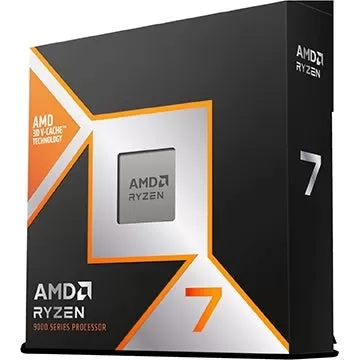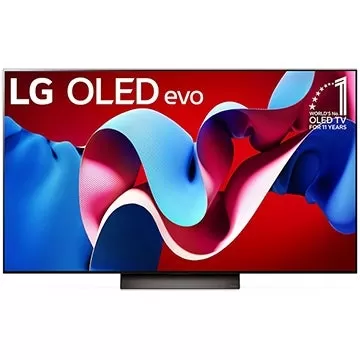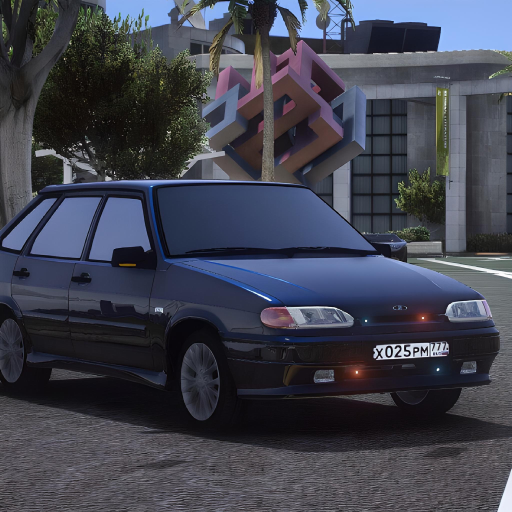For the last couple of generations, AMD has been fiercely competing with Nvidia at the high end. Now, with the AMD Radeon RX 9070 XT, Team Red has strategically shifted focus from the ultra-high-end, dominated by the RTX 5090, to creating the ultimate graphics card for the majority of gamers – a mission it successfully accomplishes.
The AMD Radeon RX 9070 XT, priced at $599, goes head-to-head with the $749 GeForce RTX 5070 Ti, establishing itself as one of the best GPUs on the market today. AMD enhances its appeal with the introduction of FSR 4, bringing AI upscaling to an AMD graphics card for the first time. This makes the Radeon RX 9070 XT the go-to choice for 4K gaming, especially for those unwilling to splurge $1,999 on the RTX 5090.
Purchasing Guide
The AMD Radeon RX 9070 XT becomes available on March 6, starting at $599. Be aware that prices may vary, especially with third-party cards that may be priced higher. Aim to find one under $699 for the best value.
AMD Radeon RX 9070 XT – Photos
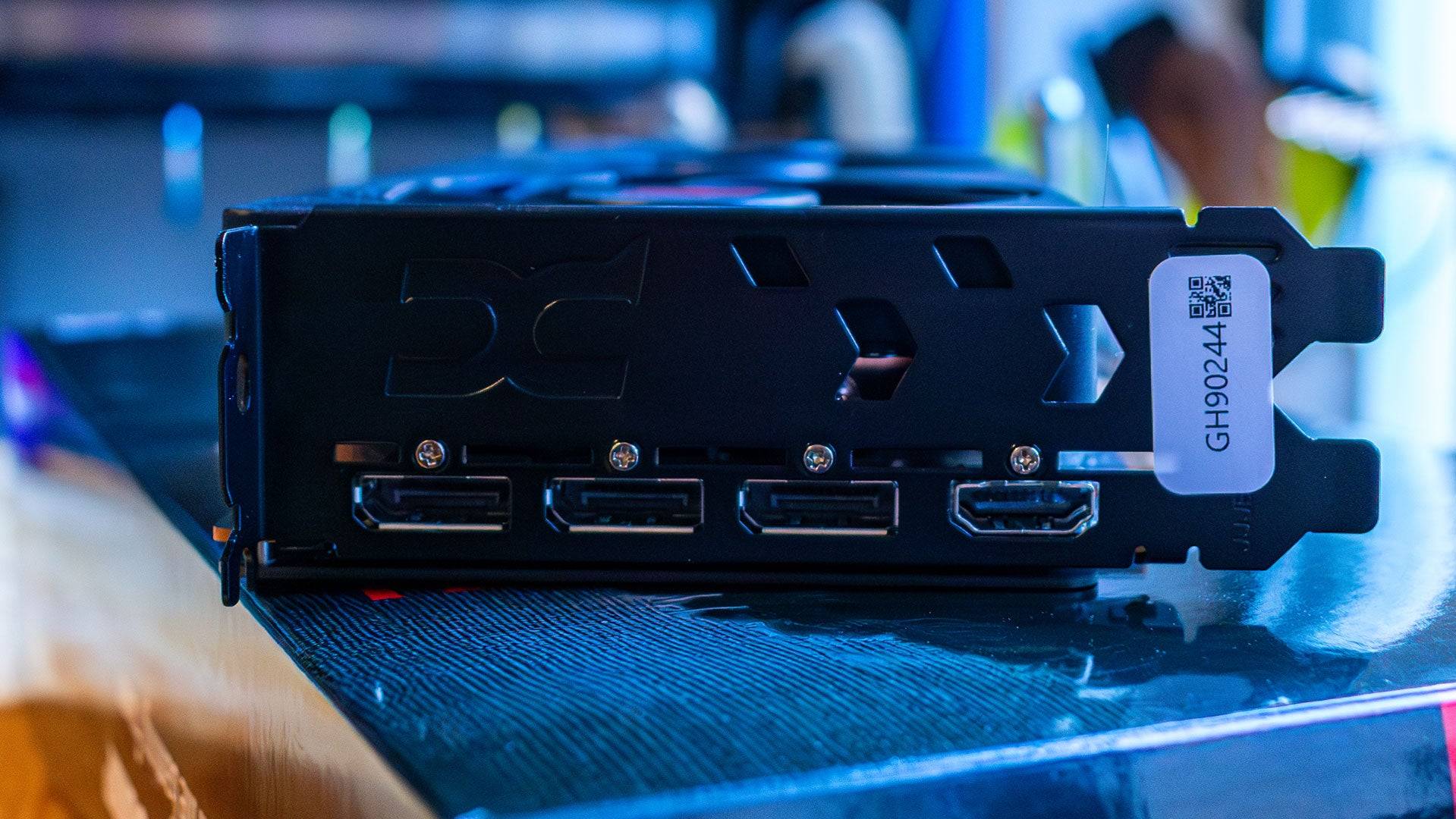
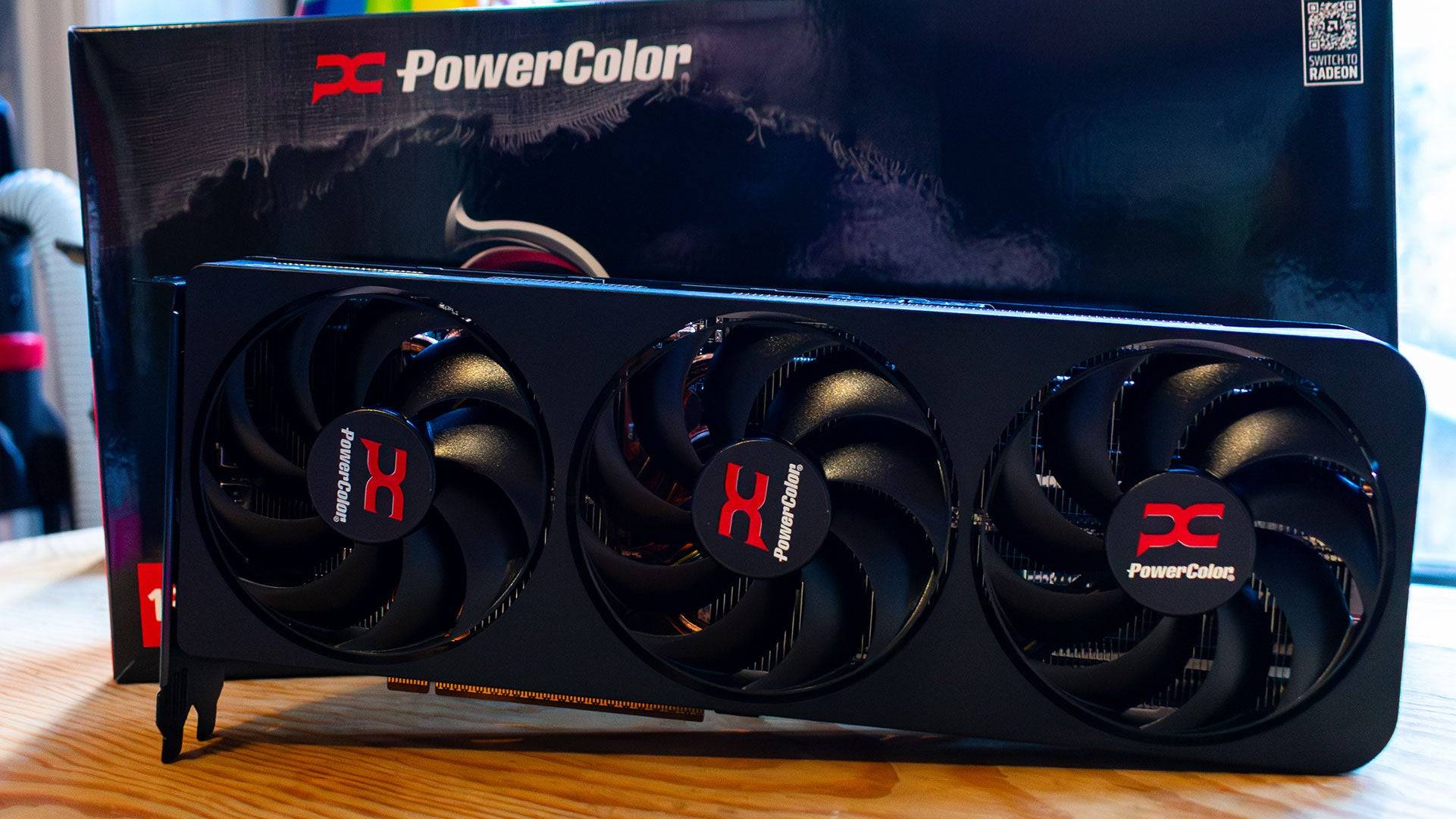 4 Images
4 Images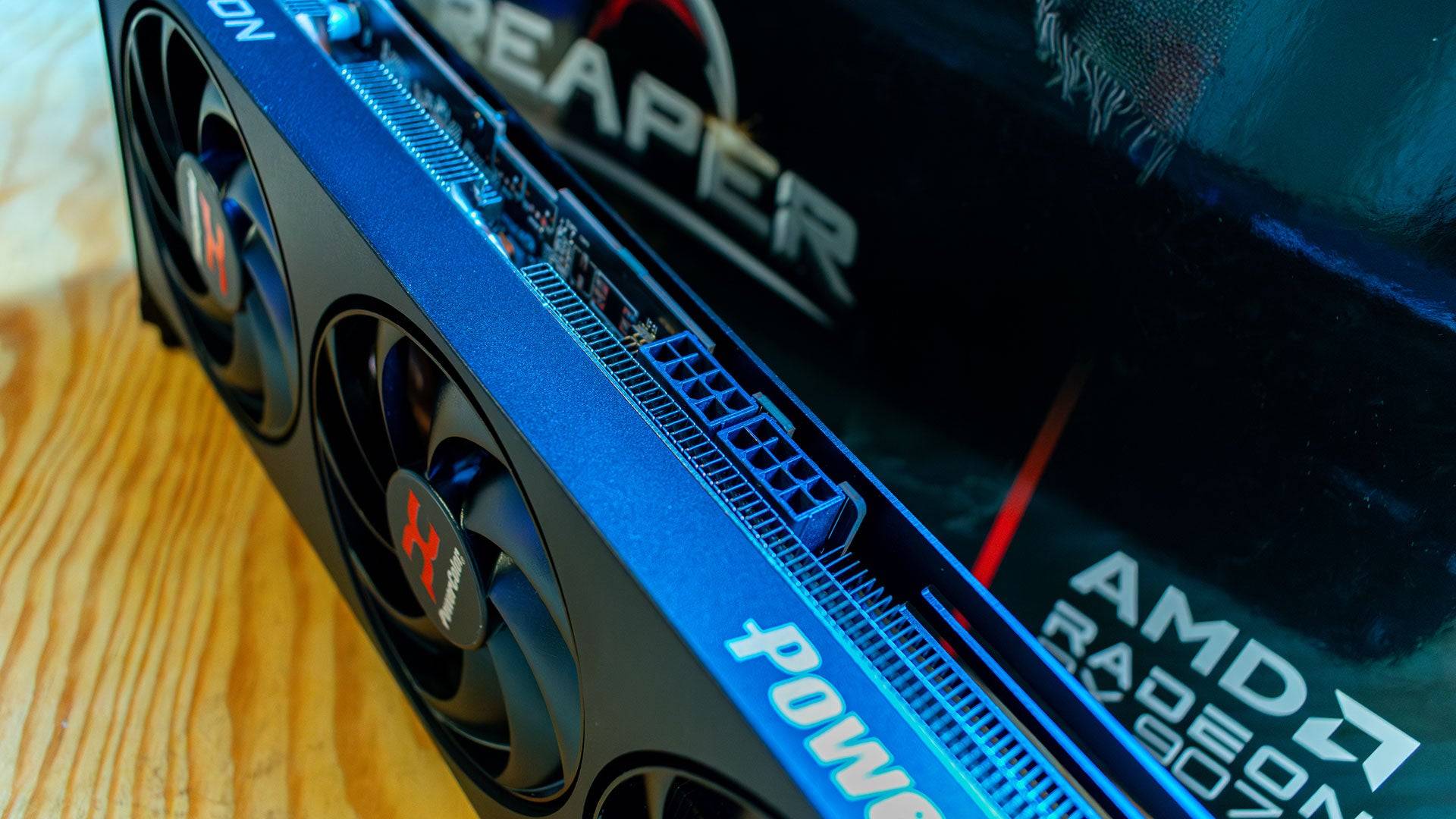
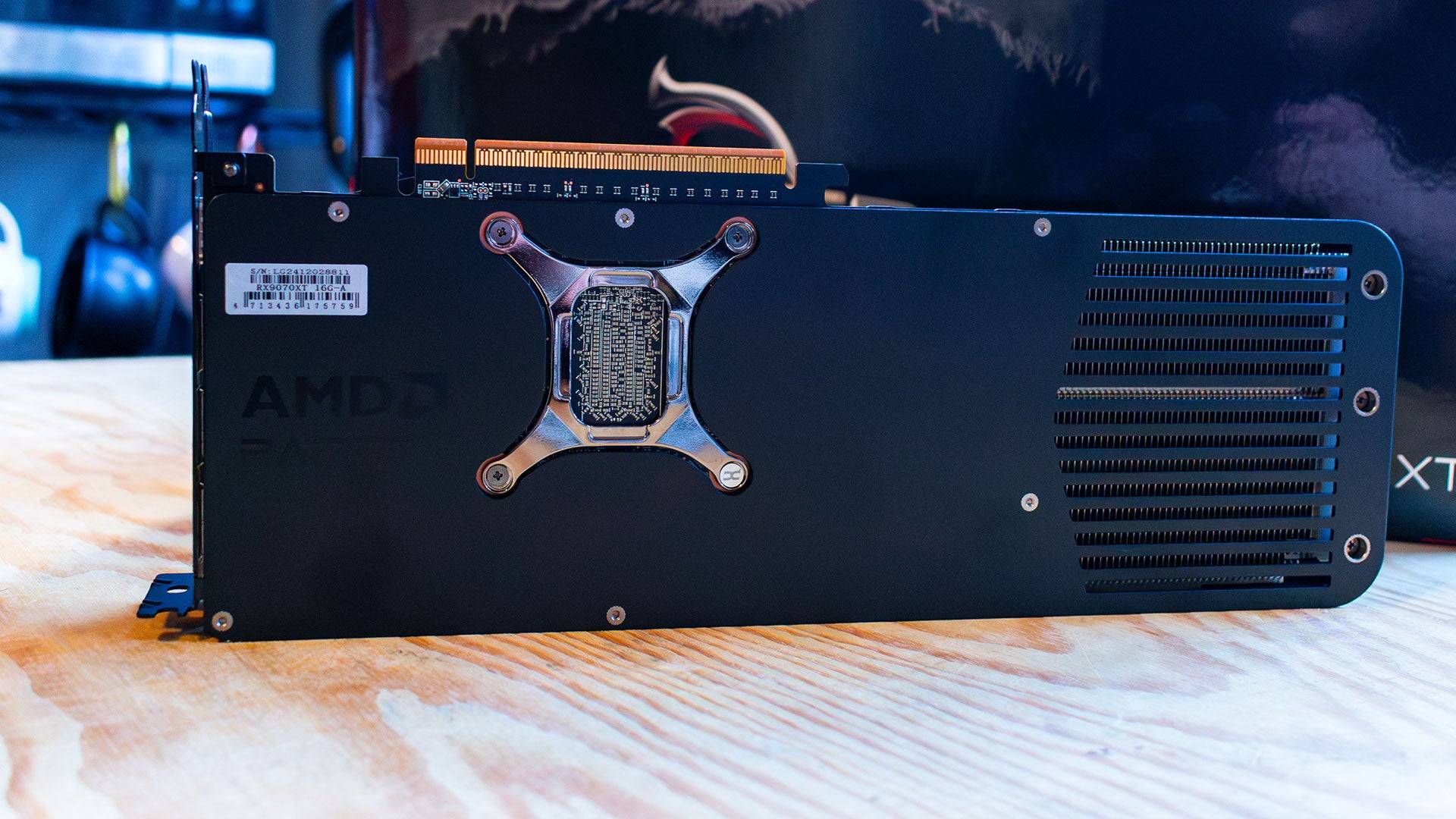
Specs and Features
Built on the RDNA 4 architecture, the AMD Radeon RX 9070 XT showcases significant enhancements, particularly with its new RT and AI Accelerators. The AI Accelerators power FidelityFX Super Resolution 4 (FSR 4), introducing AI upscaling to AMD GPUs for the first time. While FSR 4 might not boost frame rates over FSR 3.1, it significantly improves image quality. For those prioritizing frame rates, the Adrenalin software offers a toggle to disable FSR 4.
AMD has also optimized its shader cores, delivering superior performance per core. Despite the Radeon RX 9070 XT having 64 Compute Units compared to the 84 in the Radeon RX 7900 XT, it achieves a substantial generational leap at a lower launch price. Each Compute Unit contains 64 Streaming Multiprocessors, totaling 4,096, alongside 64 ray accelerators and 128 AI accelerators.
However, the RX 9070 XT has less memory than its predecessor, with 16GB of GDDR6 on a 256-bit bus, as opposed to 20GB on a 320-bit bus. This reduction impacts capacity and bandwidth, but it remains sufficient for most 4K gaming needs. The new architecture is more efficient, yet the RX 9070 XT has a slightly higher power budget of 304W compared to the 7900 XT's 300W. In testing, the 7900 XT consumed more power, peaking at 314W, while the 9070 XT reached 306W.
Cooling the RX 9070 XT is straightforward with its standard power budget. Notably, AMD does not offer a reference design for this model, relying entirely on third-party manufacturers. The Powercolor Radeon RX 9070 XT Reaper, with its compact triple-fan design, maintained a steady temperature of 72°C during testing.
The RX 9070 XT uses two 8-pin PCI-E power connectors and includes three DisplayPort 2.1a and one HDMI 2.1b port, typical of modern GPUs. A USB-C port would enhance flexibility, though it is absent.
FSR 4
For years, AMD has sought an AI upscaling solution to rival Nvidia's DLSS. Earlier versions of FidelityFX Super Resolution struggled with image quality issues, but the Radeon RX 9070 XT introduces FSR 4, powered by AI accelerators. Similar to DLSS, FSR 4 analyzes previous frames and game engine data to upscale lower-resolution images to native resolution, offering better image quality than FSR 3, albeit with a slight performance hit.
In Call of Duty: Black Ops 6 at 4K Extreme settings, the RX 9070 XT achieved 134 fps with FSR 3.1 on "Performance" mode, but this dropped to 121 fps with FSR 4, a 10% performance reduction, yet with enhanced image quality. In Monster Hunter Wilds, the 9070 XT managed 94 fps at 4K max settings with FSR 3 and ray tracing, but only 78 fps with FSR 4, a 20% drop. This performance loss is expected due to the more intensive AI upscaling workload, though AMD believes the improved image quality compensates for it, particularly for single-player games.
FSR 4 is optional and can be disabled in the Adrenalin software, reverting to FSR 3.1 if desired.
AMD Radeon RX 9070 XT & 9070 – Benchmarks
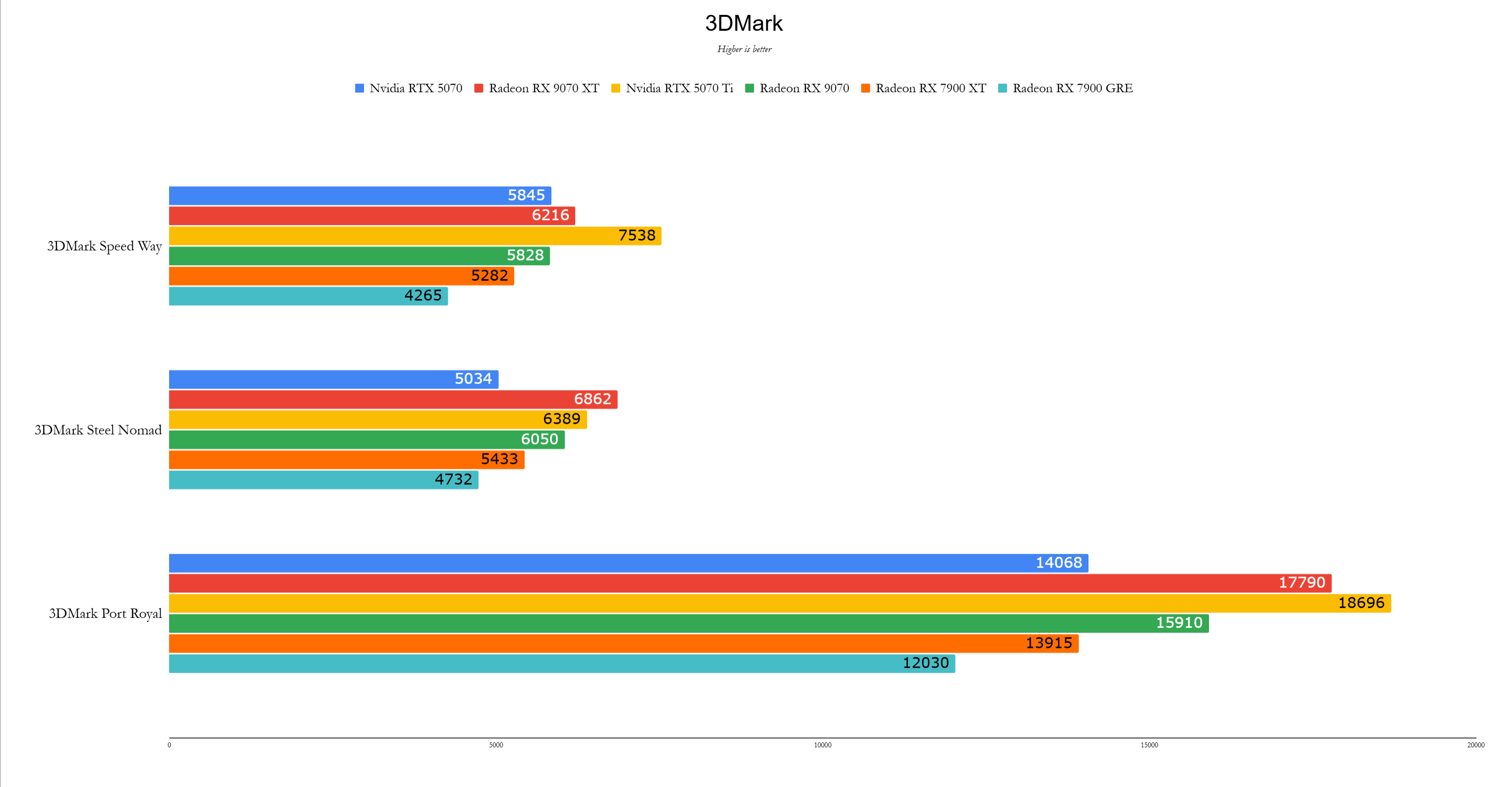
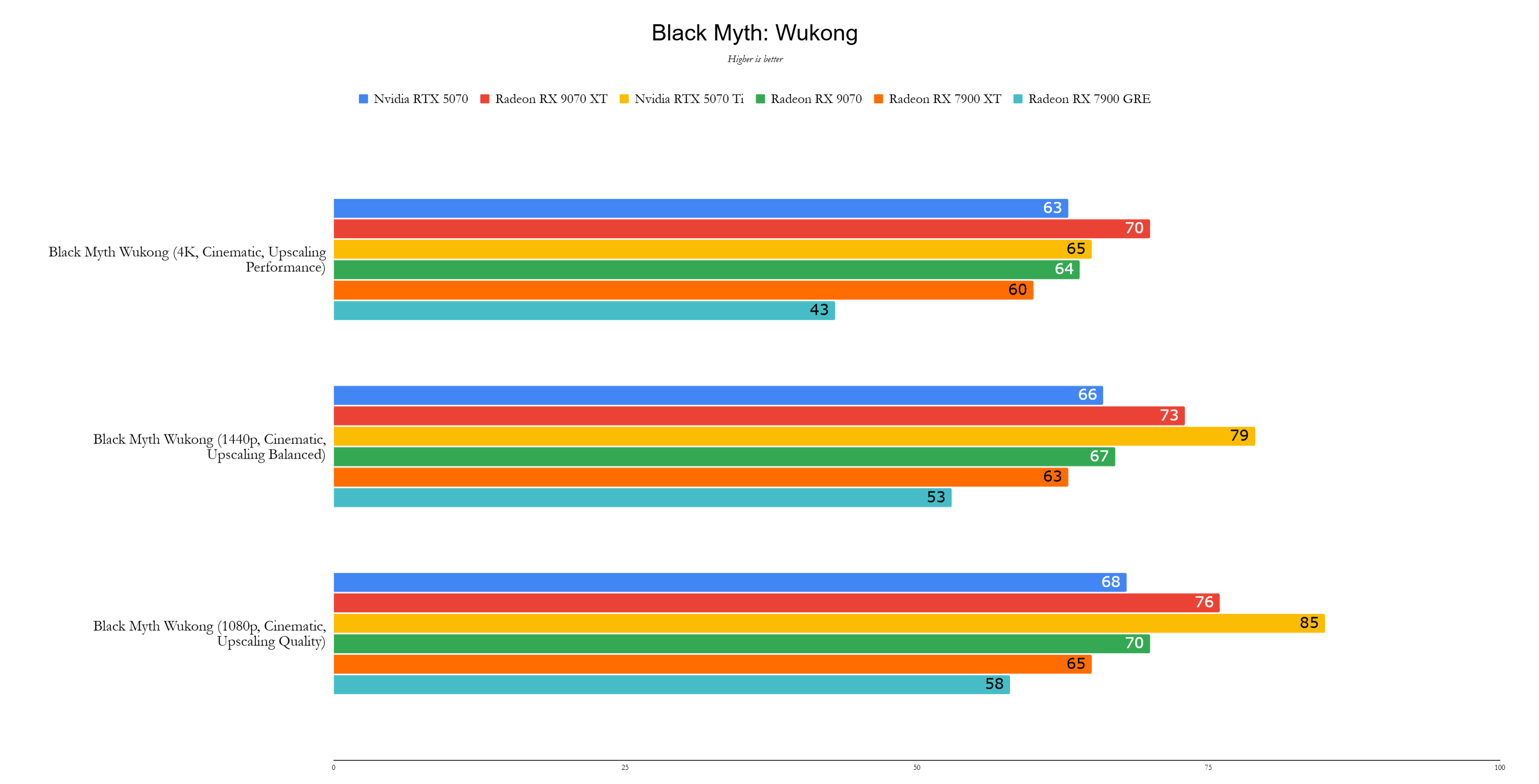 11 Images
11 Images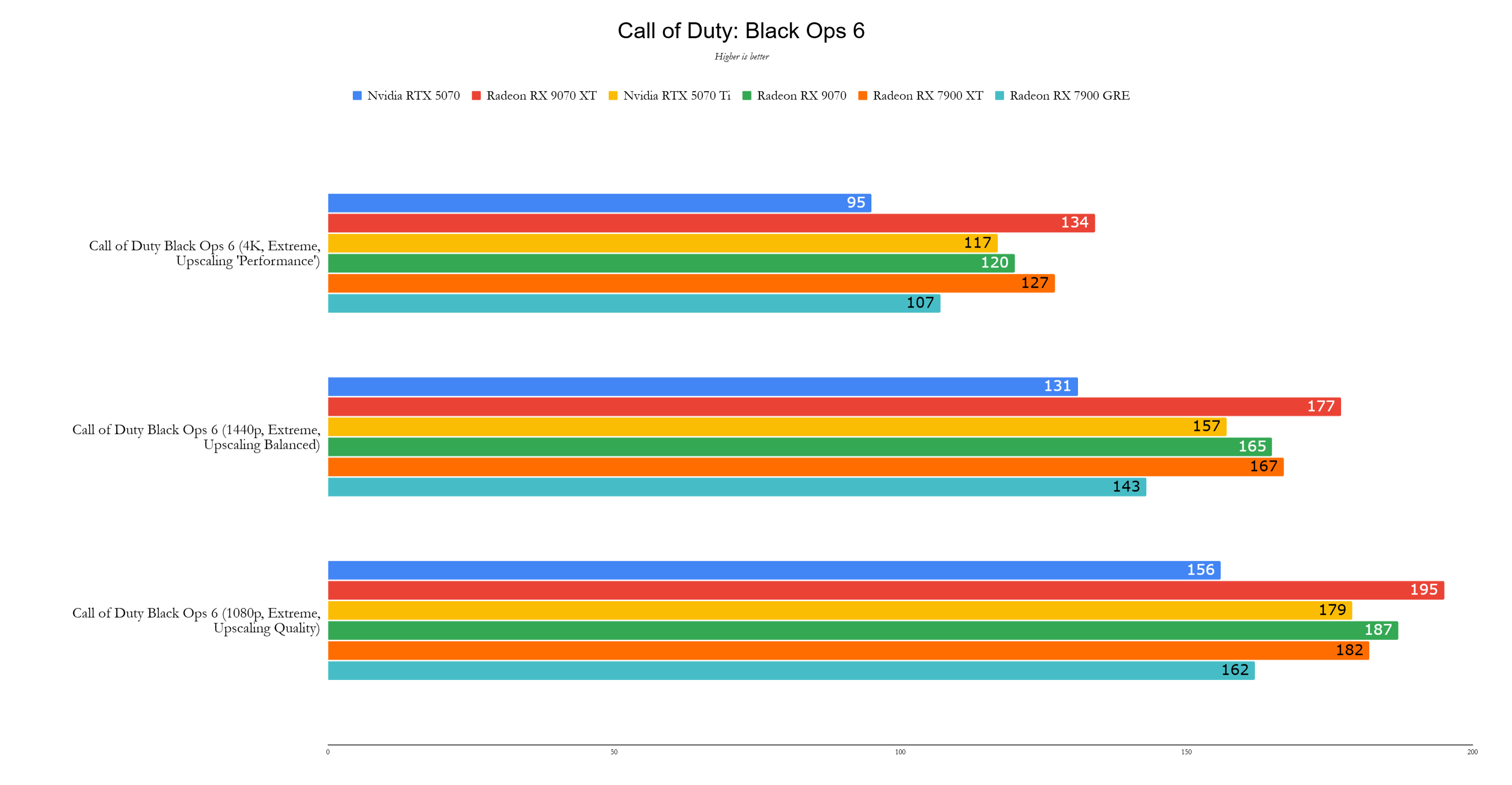
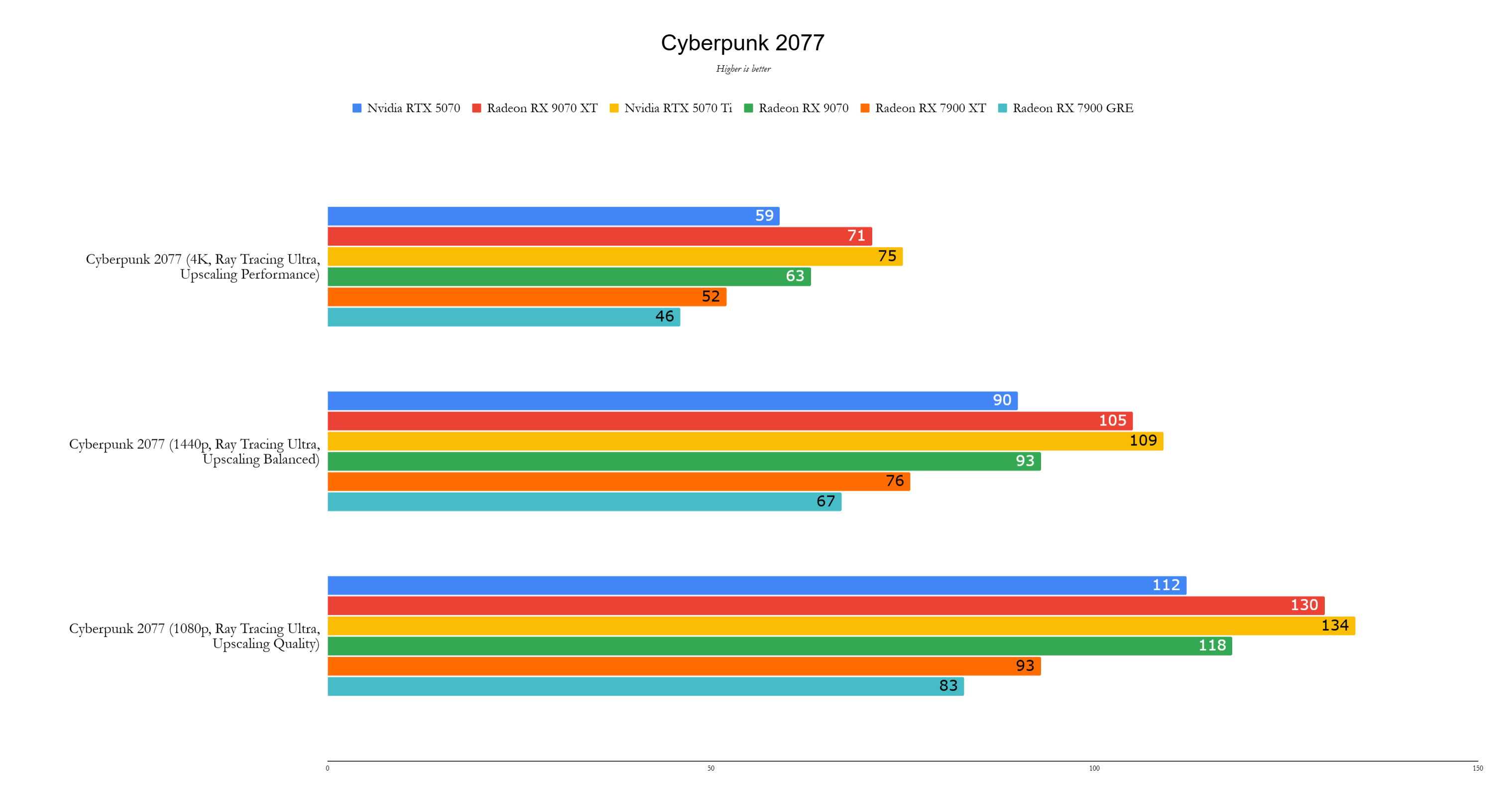
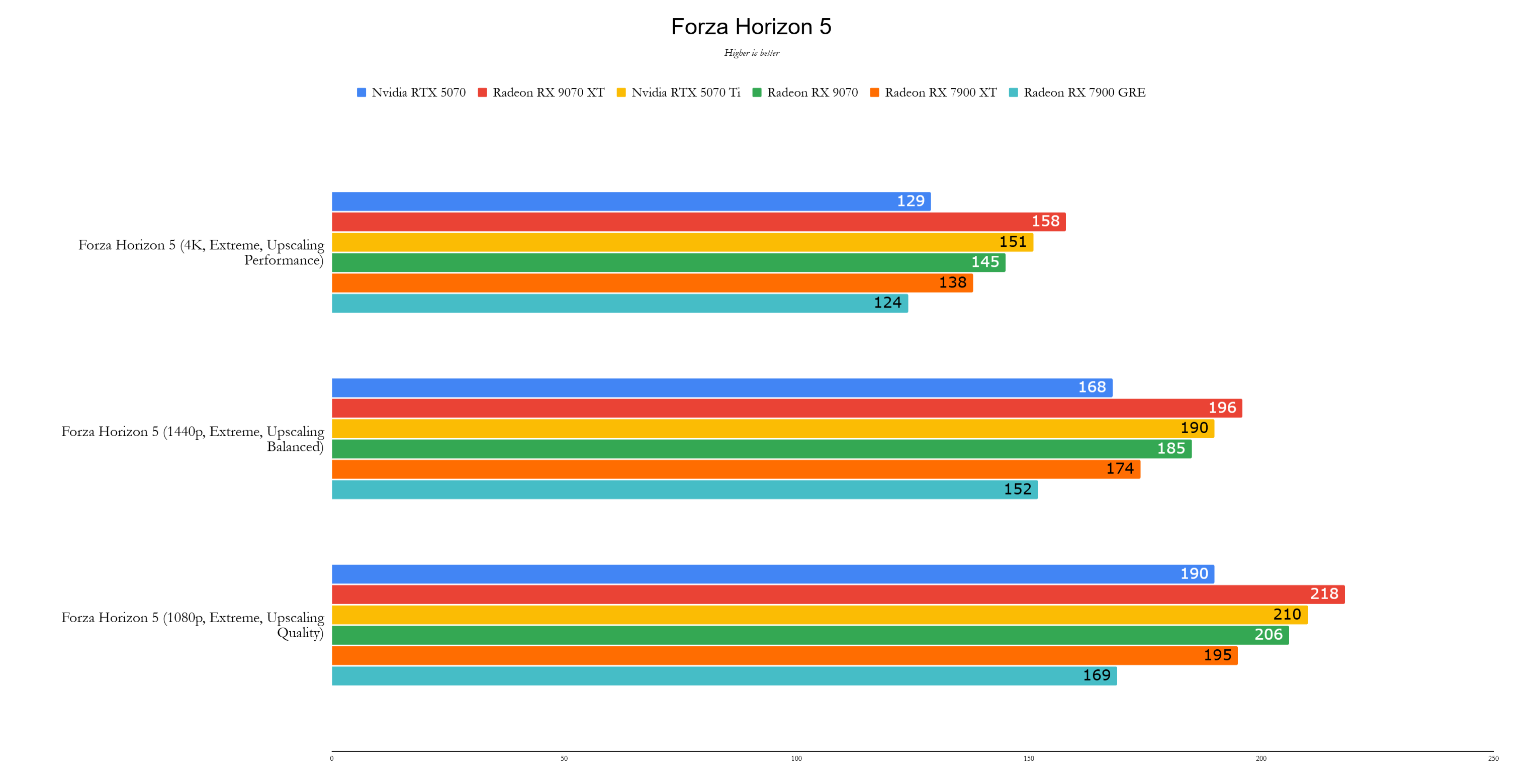
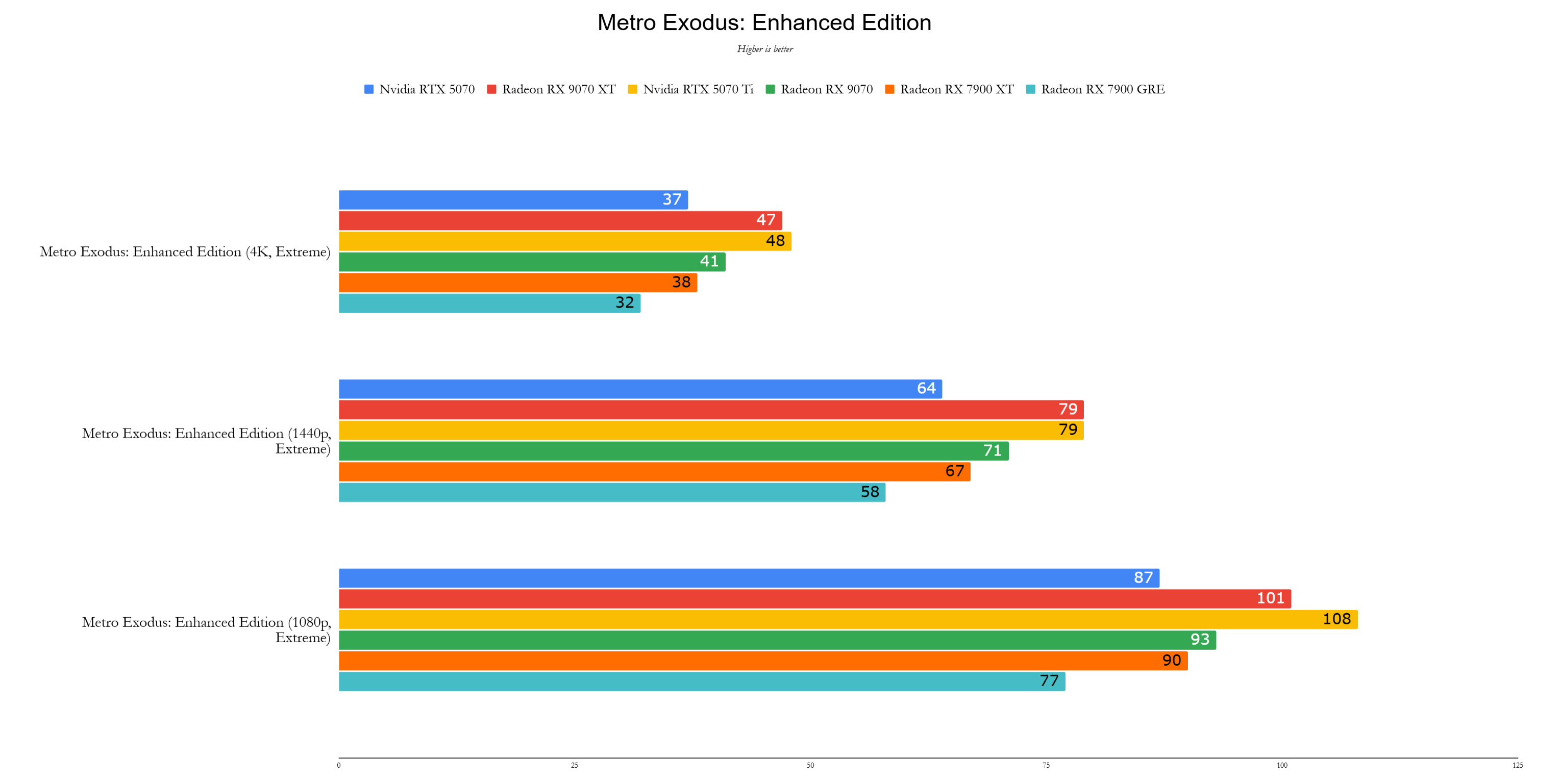
Performance
AMD delivers a powerhouse with the Radeon RX 9070 XT. Priced at $599, it undercuts the Nvidia GeForce RTX 5070 Ti by 21% yet outperforms it by an average of 2%. While the RTX 5070 Ti may excel in certain games, the RX 9070 XT's competitive performance is a significant achievement for AMD.
Across a comprehensive test suite, the RX 9070 XT was 17% faster than the RX 7900 XT, which launched at $899 two years ago, and 2% faster than the RTX 5070 Ti. At 4K resolution, the RX 9070 XT maintains its lead, making it the ideal entry-level 4K graphics card, even with ray tracing enabled.
All graphics cards were tested with the latest available drivers. Nvidia cards used Game Ready Driver 572.60, except for the RTX 5070 on review drivers. AMD cards were tested on Adrenalin 24.12.1, except for the RX 9070 XT and RX 9070, which used pre-release drivers.
In 3DMark, the RX 9070 XT outperformed the RX 7900 XT by 18% in Speed Way, though it trailed the RTX 5070 Ti by the same margin. In Steel Nomad, the performance gap widened, with the RX 9070 XT 26% faster than the RX 7900 XT and 7% ahead of the RTX 5070 Ti.
Test System
CPU: AMD Ryzen 7 9800X3D
Motherboard: Asus ROG Crosshair X870E Hero
RAM: 32GB G.Skill Trident Z5 Neo @ 6,000MHz
SSD: 4TB Samsung 990 Pro
CPU Cooler: Asus ROG Ryujin III 360
In Call of Duty: Black Ops 6, the RX 9070 XT led the RTX 5070 Ti by 15%, though the RX 7900 XT was only 6% behind. In Cyberpunk 2077, traditionally favoring Nvidia, the RX 9070 XT achieved 71 fps at 4K with Ray Tracing Ultra and FSR 3, while the RTX 5070 Ti reached 75 fps with DLSS, a modest 5% lead despite the significant price difference.
In Metro Exodus, without upscaling, the RX 9070 XT managed 47 fps at 4K, nearly matching the RTX 5070 Ti's 48 fps, and outperforming the RX 7900 XT by 24%. Red Dead Redemption 2 showcased the RX 9070 XT's prowess in Vulkan performance, achieving 125 fps compared to the RTX 5070 Ti's 110 fps and the RX 7900 XT's 106 fps.
In Total War: Warhammer 3, the RX 9070 XT fell 13% behind the RTX 5070 Ti, with 76 fps compared to 71 fps for the RX 7900 XT. However, in Assassin's Creed Mirage, it reclaimed its lead, achieving 163 fps, surpassing the RTX 5070 Ti's 146 fps by 12% and the RX 7900 XT's 150 fps by 9%.
The RX 9070 XT's most impressive victory was in Black Myth Wukong, where it achieved 70 fps at 4K with the Cinematic Preset and FSR set to 40%, outperforming the RTX 5070 Ti's 65 fps by 8%. In Forza Horizon 5, it maintained a lead, achieving 158 fps compared to the RTX 5070 Ti's 151 fps.
Announced discreetly at CES 2025, the AMD Radeon RX 9070 XT feels like a strategic move against Nvidia's Blackwell graphics cards. Priced at $599, it brings a sense of balance to the graphics card market, offering flagship performance without the exorbitant cost of the RTX 5080 or RTX 5090. While not the fastest consumer card, it harks back to the era of the GTX 1080 Ti, marking a return to value-driven flagship performance.

